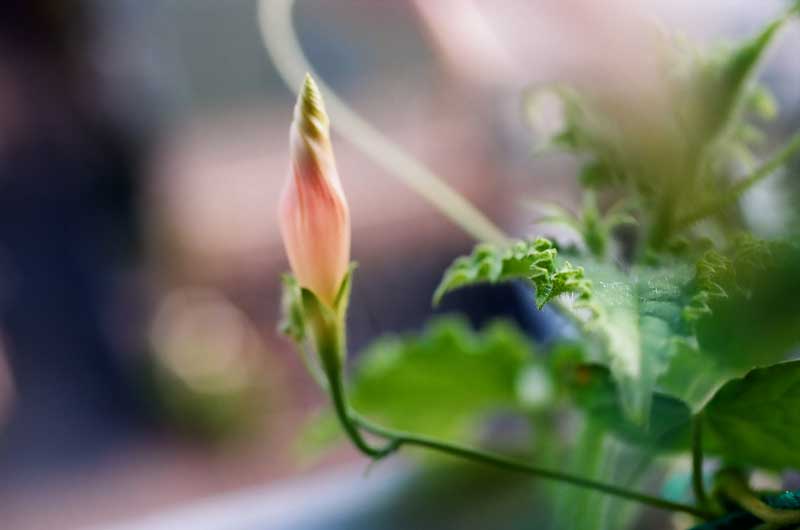
江戸アサガオのつぼみは素敵だと思います。
This Edo morning glory vine is much more delicate and slower-growing than the Okinawa one. I like how twisted and wrapped up the bud is.
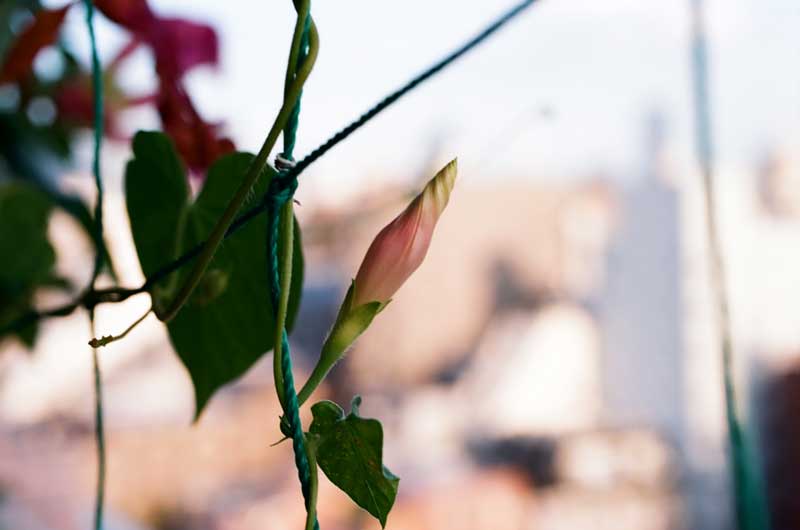

江戸アサガオのつぼみは素敵だと思います。
This Edo morning glory vine is much more delicate and slower-growing than the Okinawa one. I like how twisted and wrapped up the bud is.


Miniature pine forest outside Japan Supreme Court. In 1970s, traditional garden joined Brutalist architecture. Would love to see traditional garden with urban forest today.
最高裁判所の外にすてきな松の小さな森がある。70年代に日本庭園とブルータリスム建築は一緒になった。将来は日本庭園と都市の森は一緒になれるかな。
Walking in Chiyoda-ku opposite the Imperial Palace, I saw this forest of beautiful stunted pine trees above a stone wall. At eye level, there appear to be hundreds of carefully twisted pines whose canopy is less than one meter from the ground. Behind this gorgeous sea of needles is the Supreme Court of Japan (最高裁判所), a 1974 Brutalist concrete building that won awards for its architect Shinichi Okada.
I love the stone wall and the pine forest. In my dream, the once avant-guarde building could regain its ぷprominence by using the concrete structure to support a dense urban forest on its walls and roof. The wildness of the forest hill would contrast nicely with the austere pine forest serving as a formal moat to this newly enlivened public building. The contrast would be magnificent.
While I love the chaos of DIY gardens and the lushness of urban forests, there is also room for traditional Japanese gardens and techniques in the urban landscape, particularly around important public buildings. The contrast between heavily manipulated and more natural landscapes is a new concept at which Tokyo can excel.

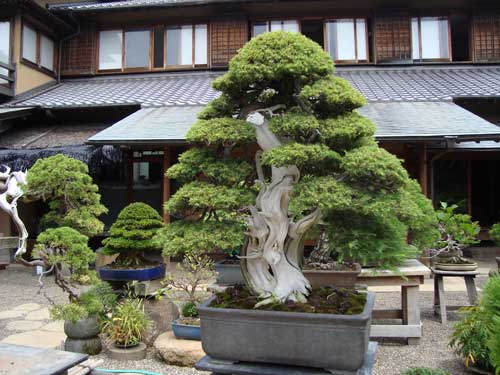
Last weekend I had the great fortune to go with Professor Hattori of Nodia’s Garden Lab and about twelve students to visit Kobayashi Kunio sensei’s Bonsai Museum in Edogawa-ku. Kobayashi-sensei has won numerous Japanese and international awards for his mastery of Japanese bonsai. By chance I had met him, his foreign apprentice Valentin, and other students a few weeks ago at the Iriya Asa Gao (morning glory) festival.
The Bonsai Museum, open six days a week in Shitamachi, far exceeded my imagination. Our large group was met at the gate by one of the Japanese apprentices. Initially we were left to admire the astounding bonsais set on simple wood stands in the courtyard. I noticed Valentin and another apprentice lifting and carry several plants, and later realized that they placing the trees in the very traditionally designed rooms of the ten year old Museum.
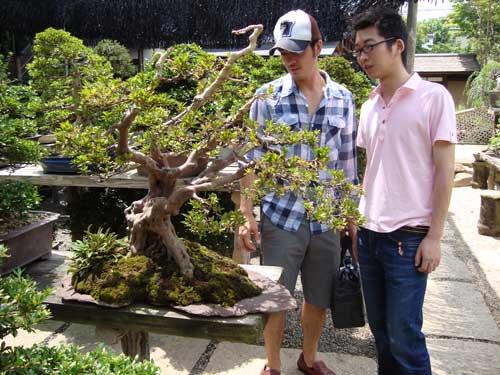
On first view, the dozens of trees are overwhelming: each a miniature world combining meticulously crafted tree, moss, in ceramics or on stone bases. Some of the trees are 600 and even 1,000 years old, and all display a refined beauty that is a mix of taking natural elements to extreme conditions. In a photo book describing his career, Kobayashi sensei says that early on he often tried too hard and in retrospect apologizes to those trees that he killed.
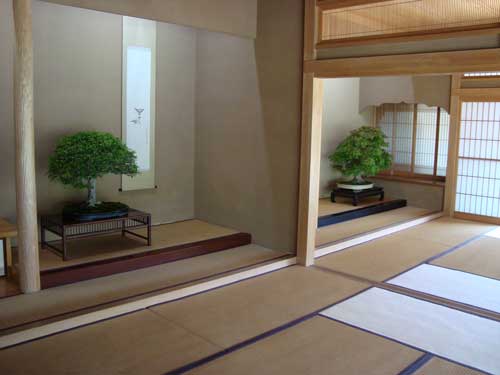
The Museum structure is a series of five interconnected formal tatami rooms, including one set up for tea ceremony with a small door entrance and area for coals and a kettle. Each room has one bonsai tree arranged with a scroll, small figurine, and short table in the ceremonial, slightly elevated section. Kobayashi-sensei worked closely with architects and designers to create an ideal environment for the contemplation of his master works. It is hard to believe the building is only 10 years old; it was so well designed that on a hot summer day, you could feel cool breezes.
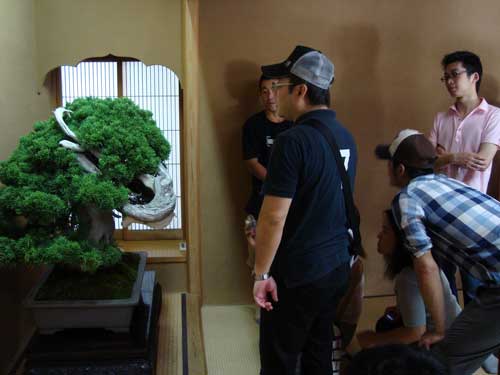
More photos of Bonsai Museum, a master lesson from Kobayashi sensei, and lunch in Shibamata after the jump.